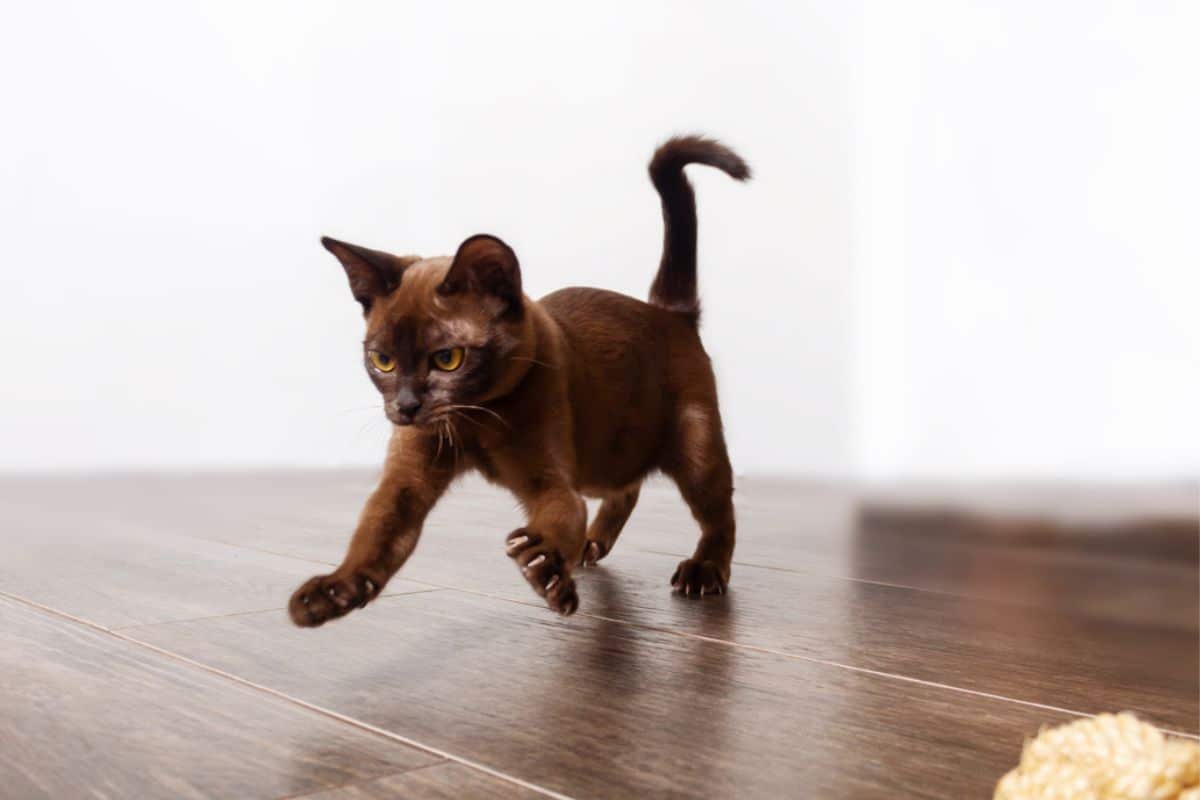
Check out our latest products
Recent feline behavior studies reveal that 95% of domestic cats experience daily energy bursts commonly known as “zoomies.” These sudden episodes of hyperactivity can leave pet owners puzzled and sometimes concerned. Understanding your cat’s wild moments becomes essential for maintaining a harmonious household and ensuring your pet’s wellbeing. From playful sprints to unexpected pouncing, these behaviors reflect deep-rooted instincts that deserve proper attention.
Cat zoomies represent one of the most fascinating aspects of feline behavior that almost every cat owner witnesses. These sudden bursts of energy transform even the calmest cats into miniature tornadoes racing through your home. Understanding why these episodes occur and how to respond appropriately helps strengthen the bond with your furry companion while ensuring everyone’s safety.
Understanding feline energy bursts and their natural origins
Evening hyperactivity episodes typically occur when your cat’s predatory instincts awaken. In natural environments, twilight hours signal hunting time when prey animals become most active. Your domestic cat retains these ancestral patterns despite living indoors with regular meal schedules.
Young cats especially need physical and mental stimulation to release accumulated energy from relatively sedentary daytime hours. Boredom and understimulation often contribute to more intense zoomies sessions. Cats confined to apartments without adequate enrichment may experience particularly dramatic energy releases.
However, excessive or aggressive episodes might indicate anxiety in closed environments. When normal playful behavior escalates into attacking owners or hiding behind furniture to ambush family members, the situation requires different management approaches. Additional symptoms like excessive grooming, digestive issues, or skin tremors suggest underlying stress rather than simple playfulness.
Effective strategies for managing your cat’s hyperactive moments
Interactive play sessions offer the most effective approach for channeling your cat’s natural hunting instincts constructively. Fishing rod toys with feathers or small prey-like attachments allow you to simulate realistic hunting scenarios while maintaining safe distance from claws and teeth.
Create engaging hunting sequences by moving the toy unpredictably, mimicking bird flight patterns or rodent scurrying movements. Pause frequently to let your cat observe, plan, and execute strategic pounces. Always end play sessions by allowing your cat to catch the toy, providing the satisfaction of a successful hunt.
Environmental enrichment throughout the day helps prevent excessive energy accumulation :
- Rotating toy selection to maintain novelty and interest
- Installing cat trees or shelving for vertical exploration
- Providing puzzle feeders to stimulate mental engagement
- Creating observation posts near windows for outdoor monitoring
Never use your hands or feet as play targets, as this teaches your cat that human body parts are appropriate prey items. This mistake can lead to unpredictable attacks during normal daily activities.
Responding safely when your cat becomes aggressive
If your cat grabs your hand or foot during an episode, resist the natural urge to pull away quickly. Rapid withdrawal movements mimic prey escape behavior, triggering stronger predatory responses and potentially more painful bites or scratches.
Instead, push gently toward your cat rather than away. This unexpected response typically surprises cats enough to release their grip. Avoid punishment or scolding, as negative reactions increase anxiety and may worsen future episodes.
For cats displaying chronic aggressive behavior during zoomies, professional intervention becomes necessary. Veterinary behaviorists can assess whether environmental modifications, therapeutic solutions, or outdoor access might resolve underlying anxiety issues. Some cats benefit from controlled outdoor experiences through harness training or enclosed patios that provide natural stimulation.
Recognition of your cat’s individual patterns helps predict and prepare for these episodes. Many cats develop consistent timing for their energy bursts, allowing you to proactively engage them in appropriate play before behaviors become problematic.


![[PETHROOM] Cat Nail Clipper Trimmer for Indoor Cats with Circular Cut Hole (2mm) | Premium Sturdy Stainless Steel Blade Cat Claw | Safe, Easy, Accurate, Quiet & Fast | Avoid Overcutting](https://m.media-amazon.com/images/I/6156hi88deL._AC_SL1298_.jpg)
![[PETHROOM] Professional Eye Comb for Pets | Stainless Steel Tear Stain Remover for Cats & Dogs | Gentle Round-Head Grooming Tool | Compact & Portable for Eye Gunk Removal](https://m.media-amazon.com/images/I/71+W758uwXL._SL1500_.jpg)
![[petora] BRUSH ON ME Gentle Facial & Eye Comb for Dogs & Cats | Smooth & Stress-Free Tear Stain Remover | Fine-Tooth Grooming Tool with Rounded Tips | Comfortable Grip for Daily Pet Grooming](https://m.media-amazon.com/images/I/81hzVmjgV1L._SL1500_.jpg)









